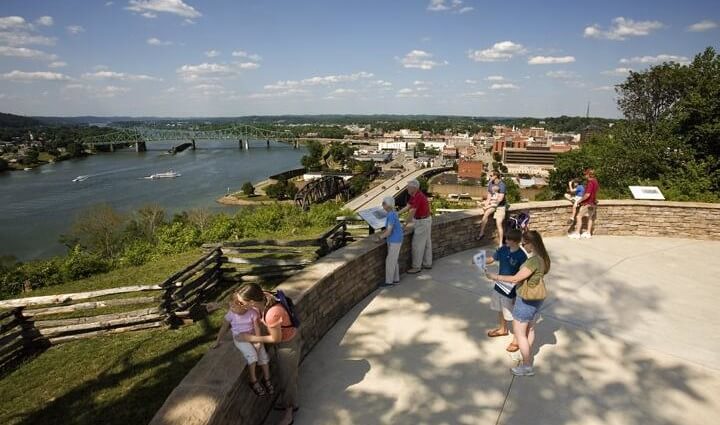Parkersburg, W.Va., established in 1810, was named for a Revolutionary War hero, and its history has long been a part of its attraction.
Museums and historic mansions, links to the Aaron Burr treason conspiracy, an old fortification, and the largest downtown historic district in the state, are all part of the lure.
Bob Enoch of the Wood County Historical and Preservation Society has difficulty containing his list of points of interest to just a few because of the wealth of history found in this city near the Ohio border.
“Though I am certainly biased, I believe the history of this part of what was once ‘western Virginia’ is very interesting,” said Enoch. “It was primarily in this part of western Virginia where disgruntled Virginians took the first steps that led to the creation of West Virginia. Those who love or have an interest in history would probably appreciate seeing what and where it was all about.”
Far earlier than the Civil War, Aaron Burr became perhaps the most interesting historic connection for Parkersburg. Blennerhassett Island Historical State Park and its Palladium-style mansion are named for Harman Blennerhassett, an Irish aristocrat who settled the island in 1798, building a 7,000-square foot home after the style of General Gorge Washington’s Mount Vernon. In 1806, Blennerhassett became involved with Aaron Burr and both men were accused by President Thomas Jefferson of treason. Neither men were convicted, but both were ruined.
Today, sternwheeler rides are available to the island. The house and island remain a popular attraction. Tours are available May-September.
Fort Boreman Historical Park, dating to 1863, overlooks the Ohio and Little Kanawha Rivers. It was a deterrent to southern sympathizers of southern Wood County, and you can see why. The bird’s-eye view of downtown Parkersburg offers a unique vantage point north, south, east and west.
Julia-Ann Square Historic District in Parkersburg is comprised of more than 125 lovely homes representative of the Victorian age. Listed as a National Historic District, the neighborhood and its residents were once instrumental in the development of Parkersburg and the State of West Virginia. Every June and December the district hosts special home tours and teas for the public.
Located just a few blocks from Julia-Ann Square, Sumner School was the first school in the South for African-Americans, graduating its first class in 1887. The school remains today and is open by appointment.
If ghosts and ghouls peak your interest, the Haunted Parkersburg Ghost Tour will do the trick. Each fall, you can hear paranormal stories of the East End Ghoul, the West Virginia Mothman, Men in Black, the appearance of an alien, and the Banshee of Marrtown. All in fun … mostly.
A century-old hardware building, the Oil & Gas Museum, presents a rustic look at the vital oil and gas industries of western West Virginia. The museum also connects the many industries that made Parkersburg and Wood County important to the creation of the state of West Virginia. The museum houses on of the most extensive collections of Civil War items in the state.
Henderson Hall was built in 1836 and became a National Historic District in 1986. The primary section of the Italianate house was completed in 1856 by George Washington Henderson and the plantation once included 2,000-acres for cattle and horse breeding. Later, oil derricks covered much of the land. The home is now open to the public for tours and offers a look into the daily lives of the Henderson family.
The Northwestern Railroad (later a branch of the B & O) was extended to Parkersburg in 1857 and the B & O Railroad Bridge was part of the link. When construction was complete, it was the longest bridge of its type in the world.
The Burning Springs Oil Fields are believed, by some, to precede the oil fields of Titusville, Penn. Oil from these fields is generally regarded as the country’s first. Its oil was used in 1840 as an elixir, but in 1860 derrick drilling sparked an oil boom. A second oil boom involved the Volcano Oil Field in the mid-1860s.
The history of Greater Parkersburg is rich and full. For a free visitors guide or a complete list of upcoming events, call the Greater Parkersburg CVB at 800-752-4982 or visit www.greaterparkersburg.com.
